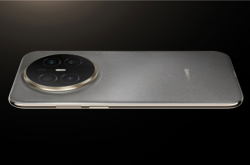2999 yuan! DJI's First-Generation Panoramic Camera Initial Review: T1-Level Image Quality, Extra Points for DJI Ecosystem
![]() 08/01 2025
08/01 2025
![]() 533
533
DJI's products are timeless classics.
Who would have imagined that DJI would venture into the realm of panoramic action cameras?
The rationale is straightforward. Today's users demand more from their outdoor photography equipment, with ever-rising standards. The Action series, limited to a single angle, no longer meets everyone's needs. A 360° panoramic camera naturally became DJI's next objective, and it arrived sooner than expected.
Fortunately, I had the chance to test the DJI Osmo 360 a month before its release. As DJI's inaugural panoramic action camera, what unique insights does it offer? Below is our in-depth experience report.
"Retro" Design, Fully Functional
Frankly, when I unpacked the Osmo 360, I was slightly underwhelmed by its design, which is quite unremarkable compared to similar products on the market.
However, the overall design style is reminiscent of DJI's Action series, featuring the same gray-black color and skin-like texture. This makes the camera appear sturdy, slip-resistant, durable, and fingerprint-resistant, earning it a thumbs up from me in this regard.
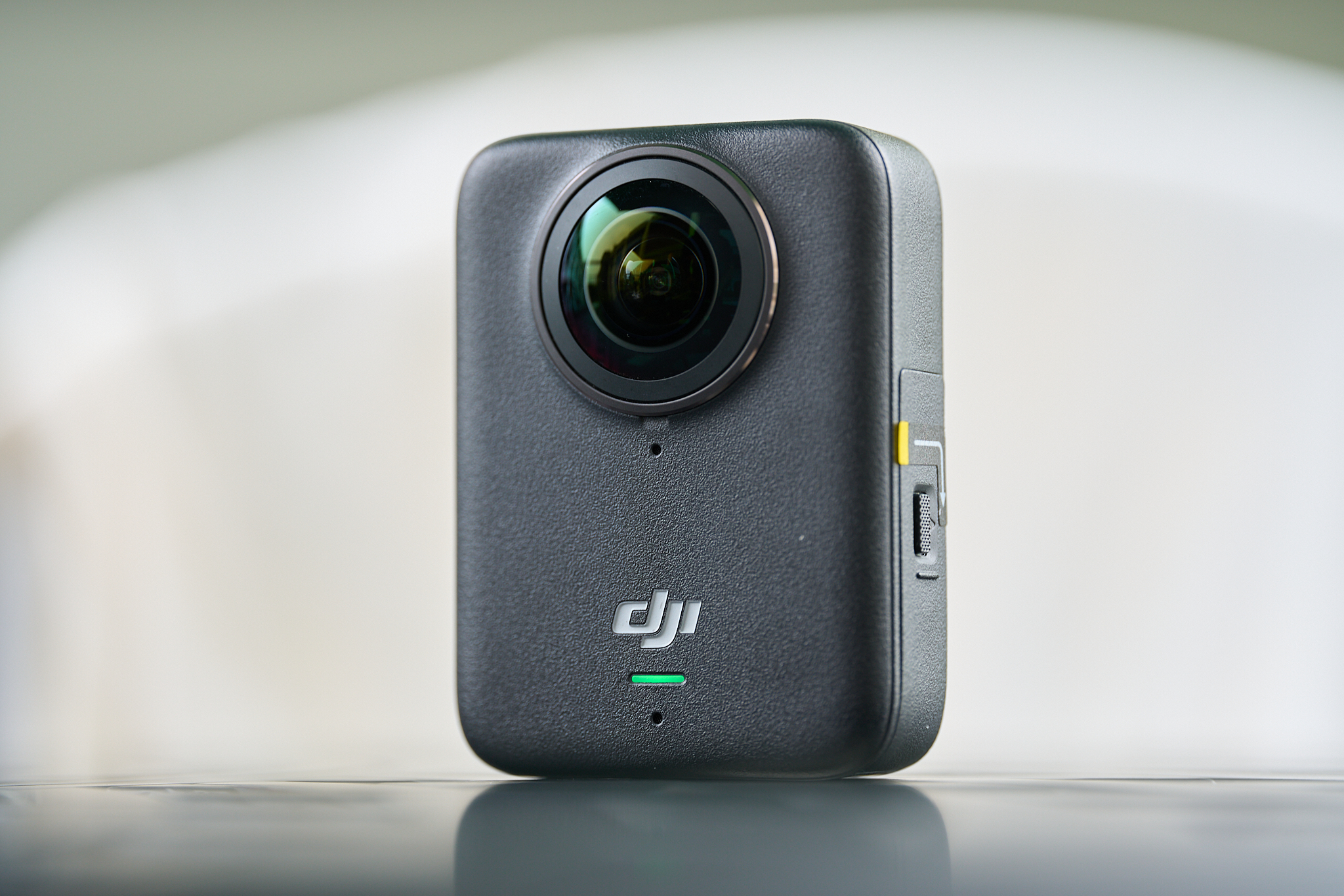
(Image source: Leitech)
DJI excels at simplifying camera body buttons, with each button meticulously considered. The entire body boasts only three buttons, yet they cover 90% of daily operations. For further settings, the 2-inch screen will meet your needs seamlessly.
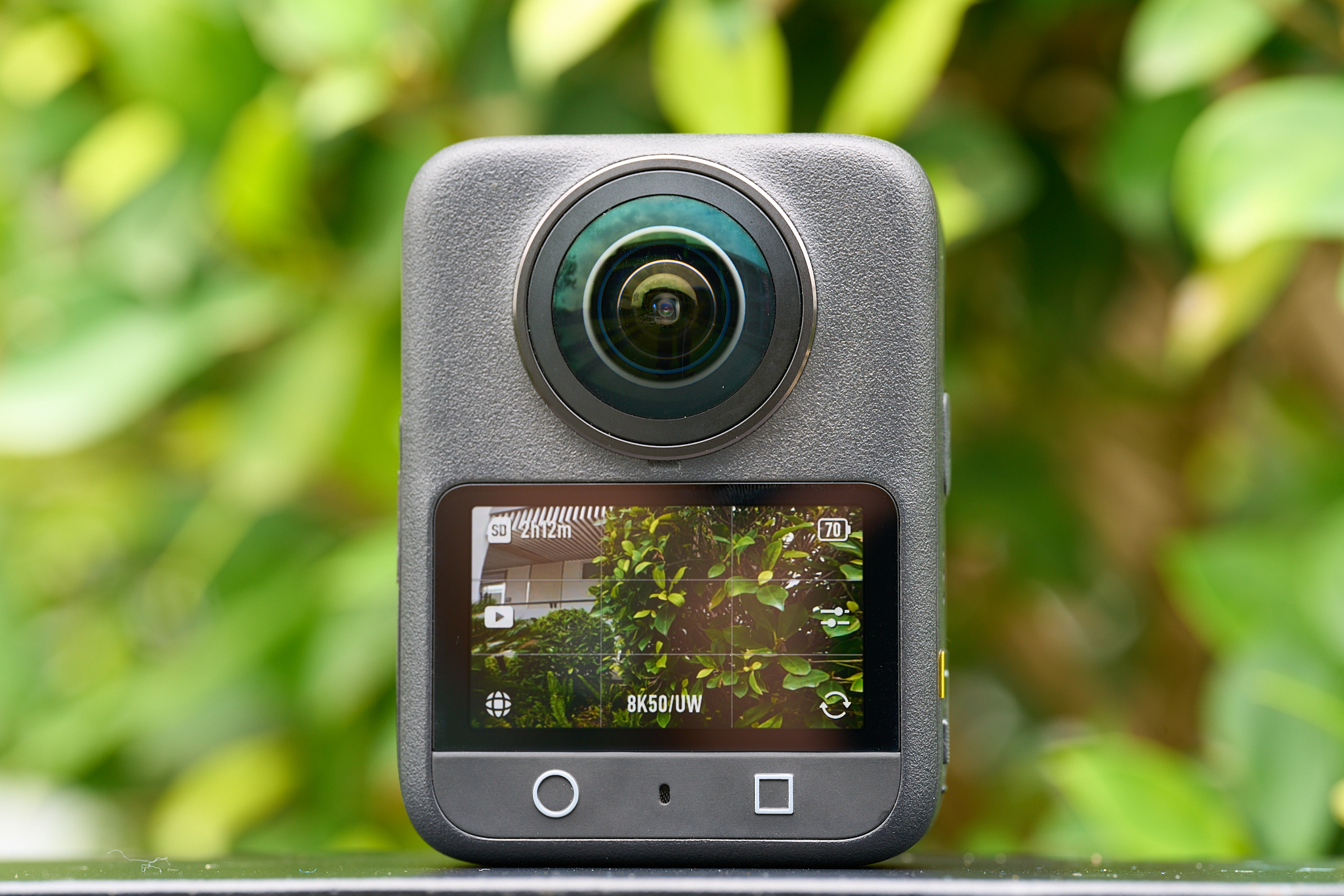
(Image source: Leitech)
The camera body features a USB-C interface and a battery compartment on both sides. Recognizing that panoramic action cameras face more outdoor scenarios, DJI has changed the opening method from a simple push-pull to "push the button all the way to the right and then pull down." As someone accustomed to the Action series' operation, I initially found it challenging to adapt, but from a safety perspective, this design is undeniably more reasonable.
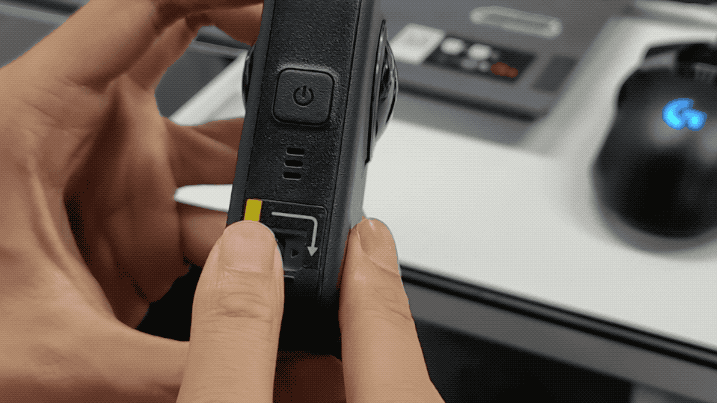
(Image source: Leitech)
DJI Osmo 360 continues DJI's classic magnetic mounting design, but due to its wider and heavier body compared to the Action series, the magnetic interface has also grown larger. While it can still be installed and removed with one hand, the adapter included in its packaging is not interchangeable with the Action series. This is worth noting.
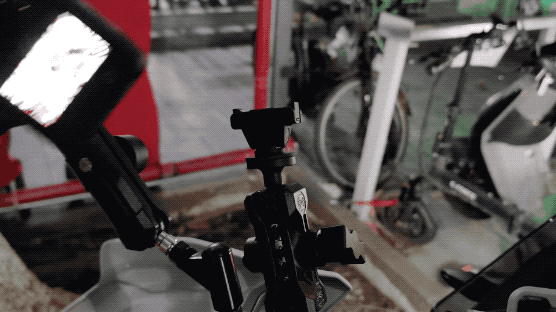
(Image source: Leitech)
On several occasions, I walked up to my bike with the Osmo 360 only to realize the handlebar adapter was for the Action series, forcing me to return upstairs for the dedicated adapter. (However, various magnetic accessories like cycling kits and selfie sticks remain compatible with the Action series.)
As a panoramic camera, the Osmo 360 is equipped with two prominent fisheye lenses that protrude significantly above the camera body. Thus, special attention is required for its placement in daily use. Scratched lenses are minor issues; affecting subsequent shooting is a significant concern.

(Image source: Leitech)
Speaking of lenses, I must mention the Osmo 360's hardware configuration. It boasts a 1/1.1-inch square CMOS.
Why specify square? Camera enthusiasts are aware that traditional camera CMOS sensors have a 4:3 aspect ratio. However, when applied to panoramic cameras requiring 360° recording front and back, about 25% of the area goes to waste. The Osmo 360's square CMOS perfectly utilizes the entire CMOS, offering superior imaging results and performing better in terms of size, power consumption, and heat generation.
Of course, explaining this new CMOS, which involves a knowledge blind spot for me, in simple terms is challenging. But everyone should understand one thing: DJI Osmo 360 is currently the panoramic camera with the largest sensor size, hands down. And the principle of "a larger sensor beats all" is universally understood.
Besides enhancing picture performance, the large sensor enables it to offer an 8K50fps recording specification, coupled with a 13.5-stop dynamic range. This allows the DJI Osmo 360 to deliver exceptional picture effects in various high-contrast scenarios like sunrise/sunset, urban night scenes, or midday.
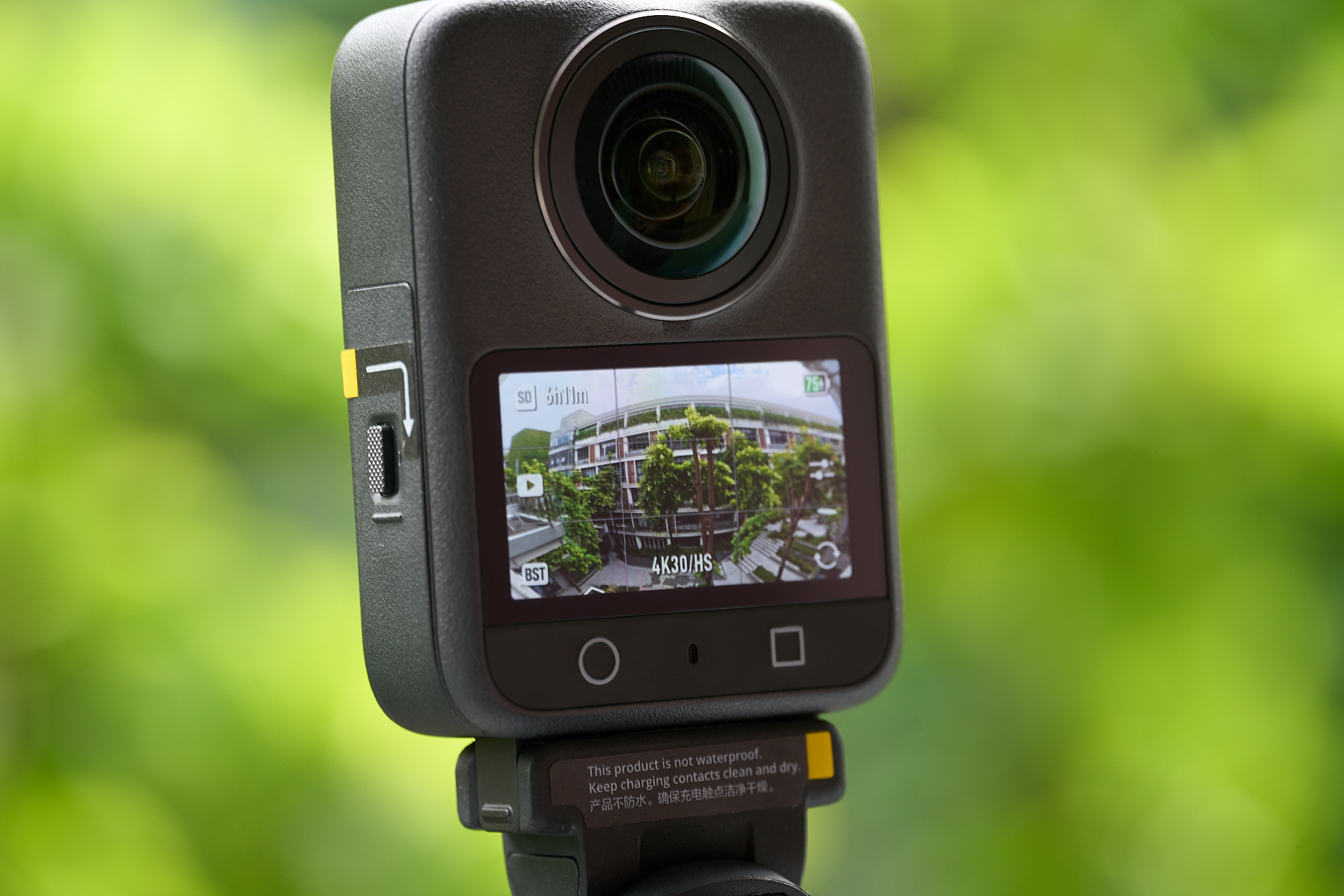
(Image source: Leitech)
That concludes the appearance discussion. While it didn't surprise me much in design, I understand that this design is currently the optimal solution for panoramic cameras.
Powered by a One-Inch Sensor, Outstanding Night Scene Performance
Ultimately, the most crucial aspect of a panoramic camera is its image quality. Unlike ordinary action cameras, panoramic cameras' 360° recording feature requires manufacturers to invest more time in organizing and tuning algorithms, especially at stitching points where two lenses record images. Subpar optimization can lead to a noticeable image separation.
Let's start with the most challenging scenario: night scenes. In panoramic night scene mode, the DJI Osmo 360 offers a maximum recording specification of 8K30fps and three specifications of 24/25/30fps. Initially, this frame rate might seem low, but it ensures no lag when transferred to mobile phones, computers, or other devices, so there's no need to worry.
On last year's DJI Action 5 Pro, DJI introduced a night scene mode for action cameras for the first time. As the name implies, it maintains image purity under complex lighting conditions and ensures the scene's original brightness and image quality as much as possible.
The screenshot and GIF clearly show that in a dim scene with only street lights and car lights, the DJI Osmo 360 performs acceptably. While zoomed-in clothing areas still exhibit blockiness, there are no issues like blurred dark details, color banding, or fullscreen noise. This deserves a thumbs up. (The image is compressed, and some colors may appear distorted.)
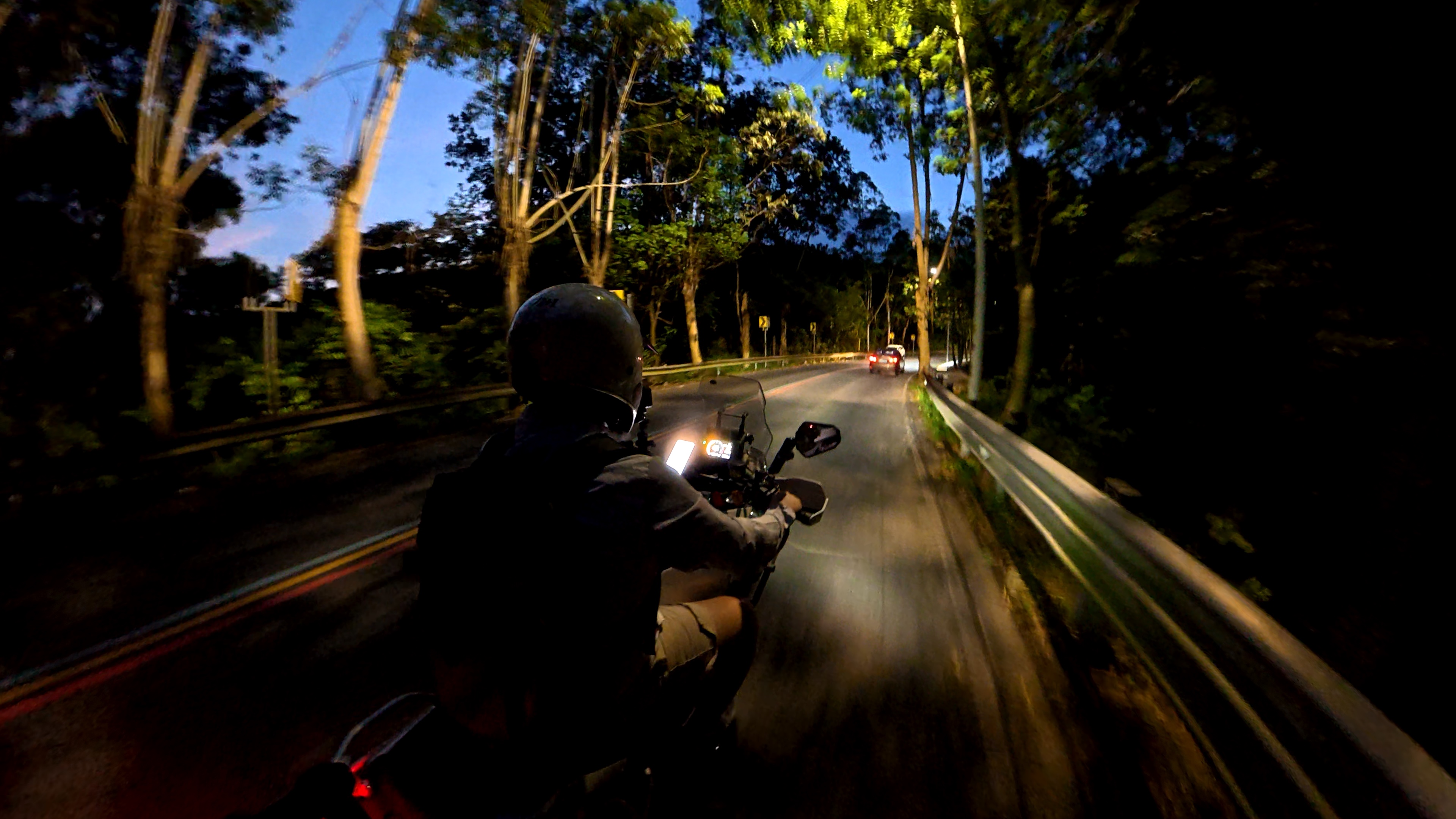
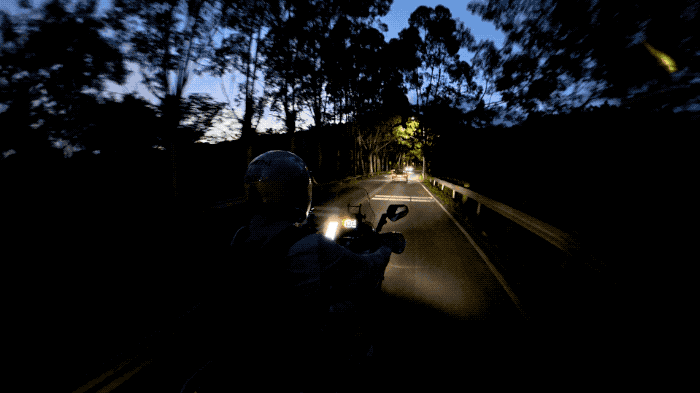
(Image source: Leitech)
The GIF also reveals that the DJI Osmo 360 transitions smoothly from dark to brightly lit scenes, without the high flicker, lag, or white balance inaccuracy I anticipated. Additionally, street lights' shadows on leaves are well-preserved.
My only dissatisfaction lies in its performance when facing high-brightness light sources like mobile phone screens and oncoming car headlights.
In excellent weather and lighting conditions, the DJI Osmo 360 unleashes its full potential. While it cannot adjust image texture using a polarizing filter like the Action series, with a new algorithm's support, the default color is already very pleasing to the eye, and a simple filter can be applied for social media posting.
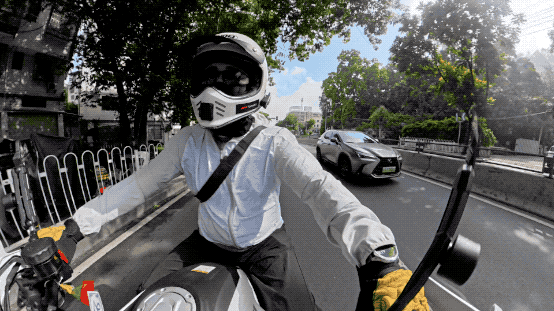
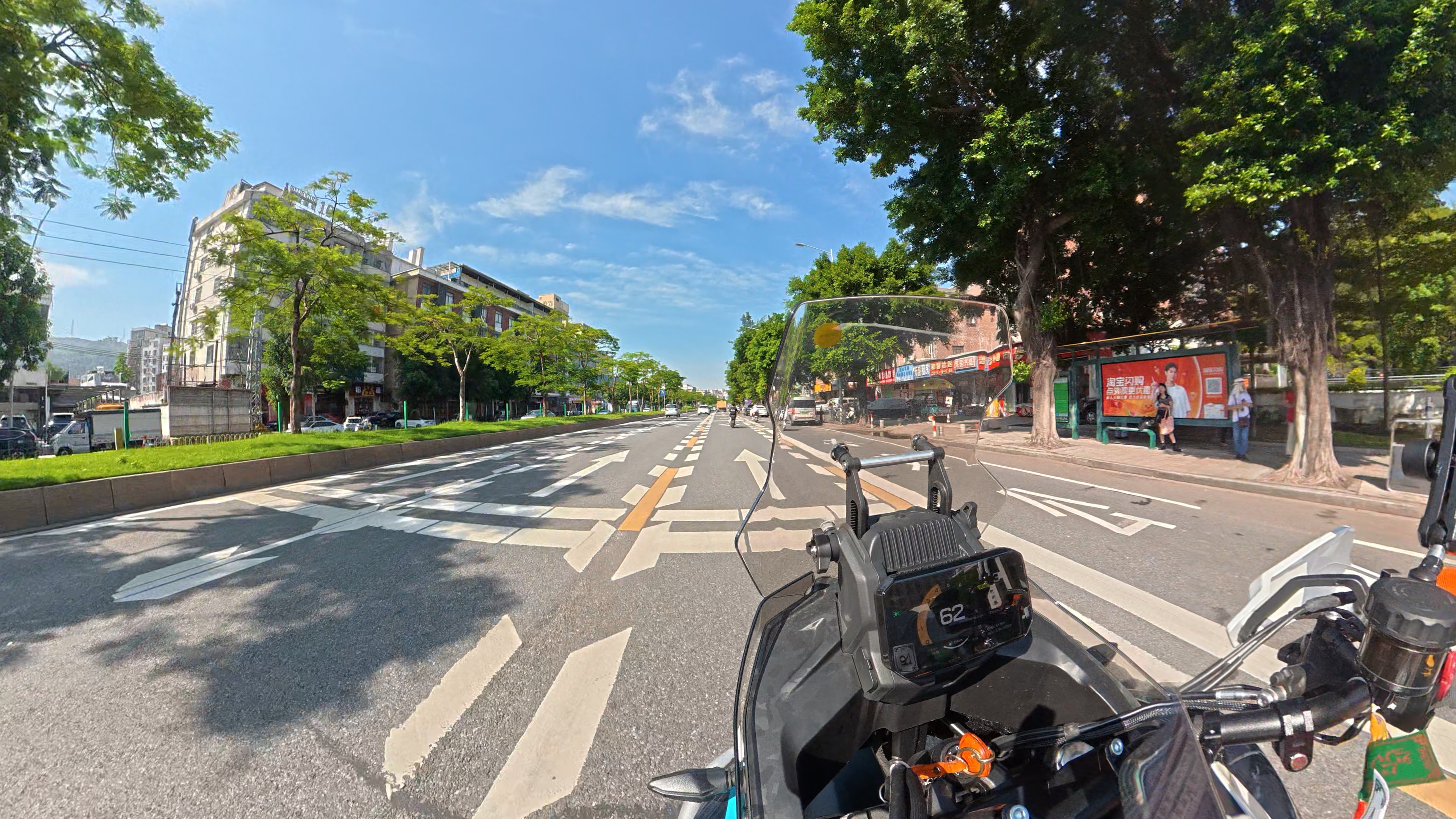
(Image source: Leitech)
If you think that's not enough, you can enable the built-in Log video recording mode and apply your favorite lut file or adjust image details in post-production.
By the way, although the DJI Osmo 360 comes with an anti-shake function, it only works in source files with the suffix "LRF." If you import a regular MP4 file, you'll get shaky footage that might make you question your sanity. (It automatically takes effect on the mobile app but needs careful identification in computer software.)
As seen in the GIF, without any stabilizer's aid, the DJI Osmo 360 records very stable video footage, with no image jumping even on bumpy roads.
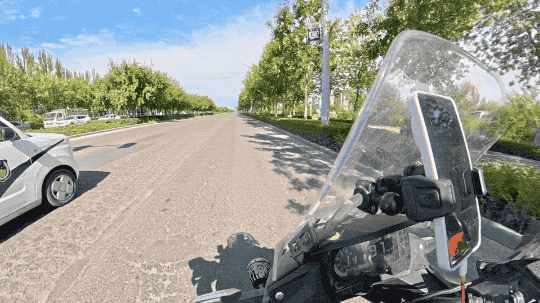
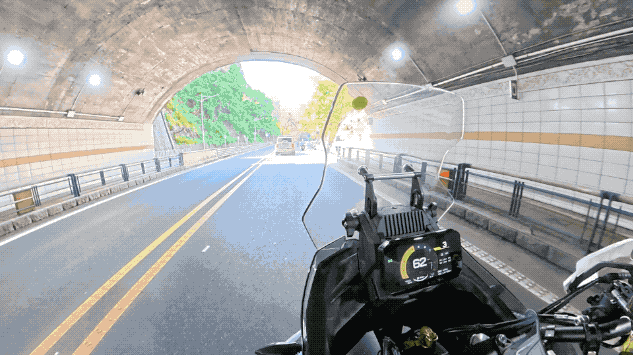
(Image source: Leitech)
However, if mounted high using a selfie stick, the stick's "shaking" combined with bumpy roads and crosswinds can make it difficult even for DJI's anti-shake algorithm to eliminate multiple shakes. Therefore, I recommend using a more sturdy and stable camera extension pole. Selfie sticks with telescopic properties are unsuitable for such scenes.
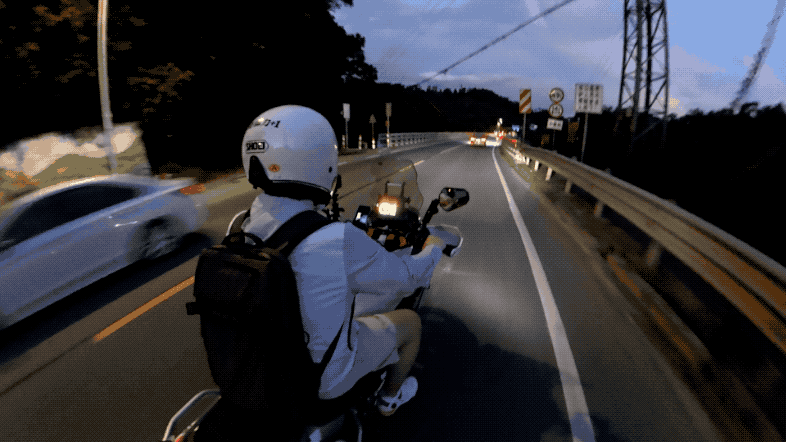
(Image source: Leitech)
After discussing many advantages, let's address the disadvantages. Firstly, it still has the so-called "stitching line" issue, the connection area where front and rear lens images are synthesized. This may cause slight visual discontinuities and deformations.
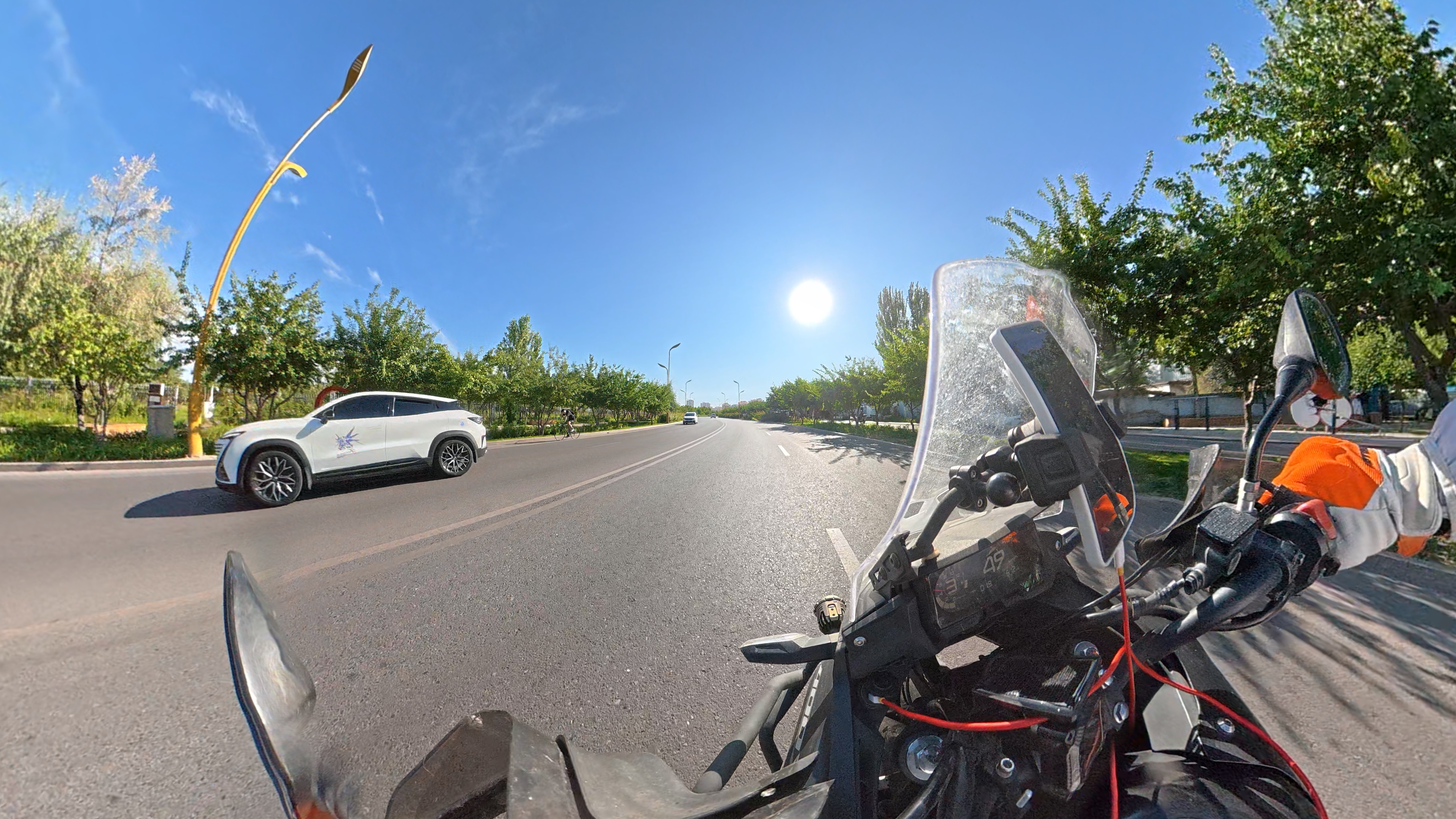
(Image source: Leitech)
While the official recommendation is to point one lens directly at the main action direction to reduce this issue, it's difficult to avoid completely in scenarios with intense motion or frequent perspective switching. Improper recording angle selection can make this stitching line noticeable. While it doesn't affect the material's usability, it can be somewhat unsatisfactory.
Secondly, its algorithm for eliminating selfie sticks is somewhat too aggressive. Panoramic camera users know that to ensure image integrity, panoramic cameras eliminate the camera's bottom connecting rod through a built-in algorithm.
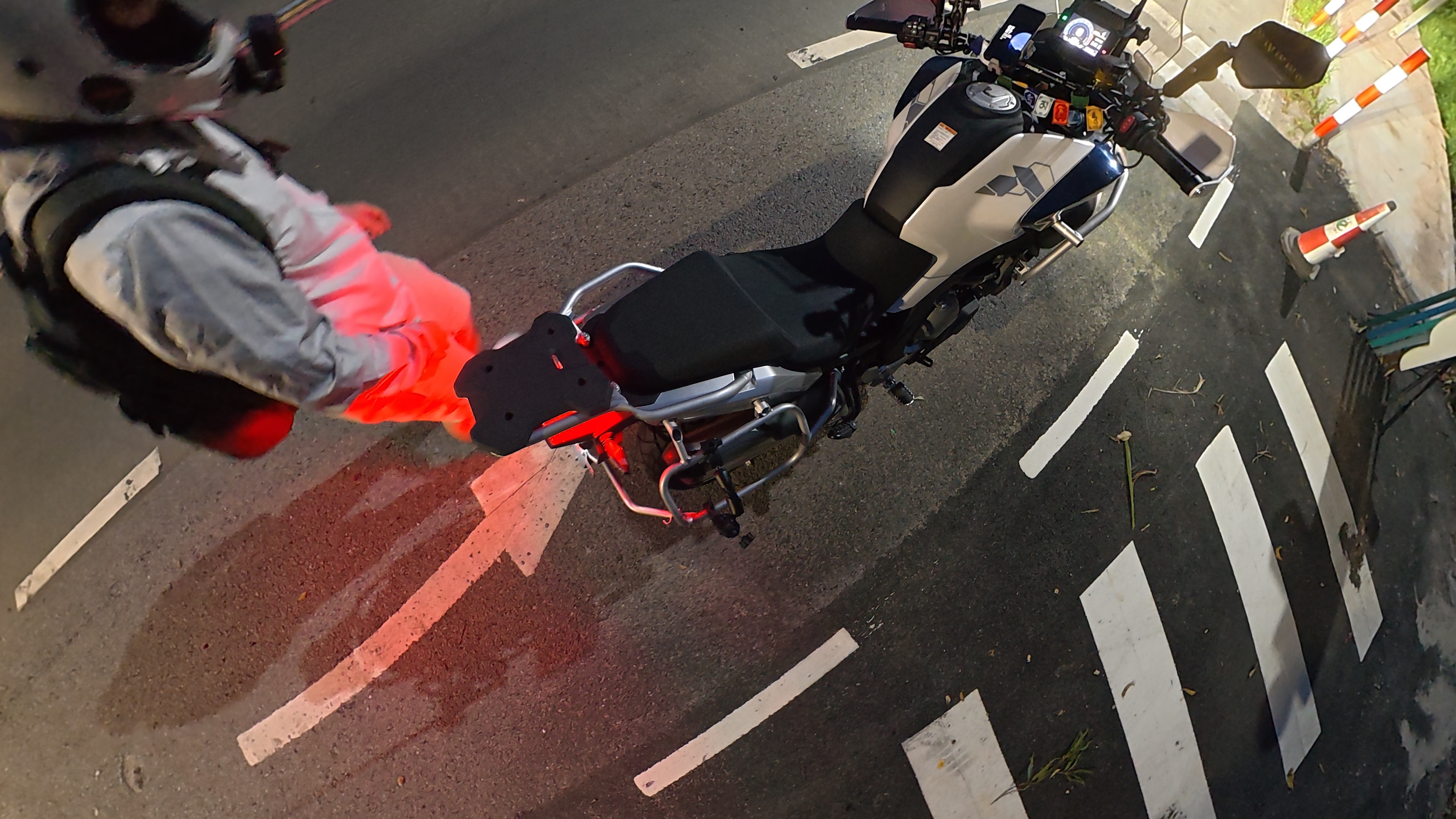
(Image source: Leitech)
As seen in the image, under the algorithm's action, the DJI Osmo 360 perfectly eliminates the connecting rod part. Just looking at the image, you wouldn't know I mounted an action camera and about 18cm connecting rod on the handlebar. However, upon closer inspection, part of the nearby rearview mirror base has also been "removed." While it doesn't affect the overall image, this slightly penetrating effect is not particularly satisfactory to me.
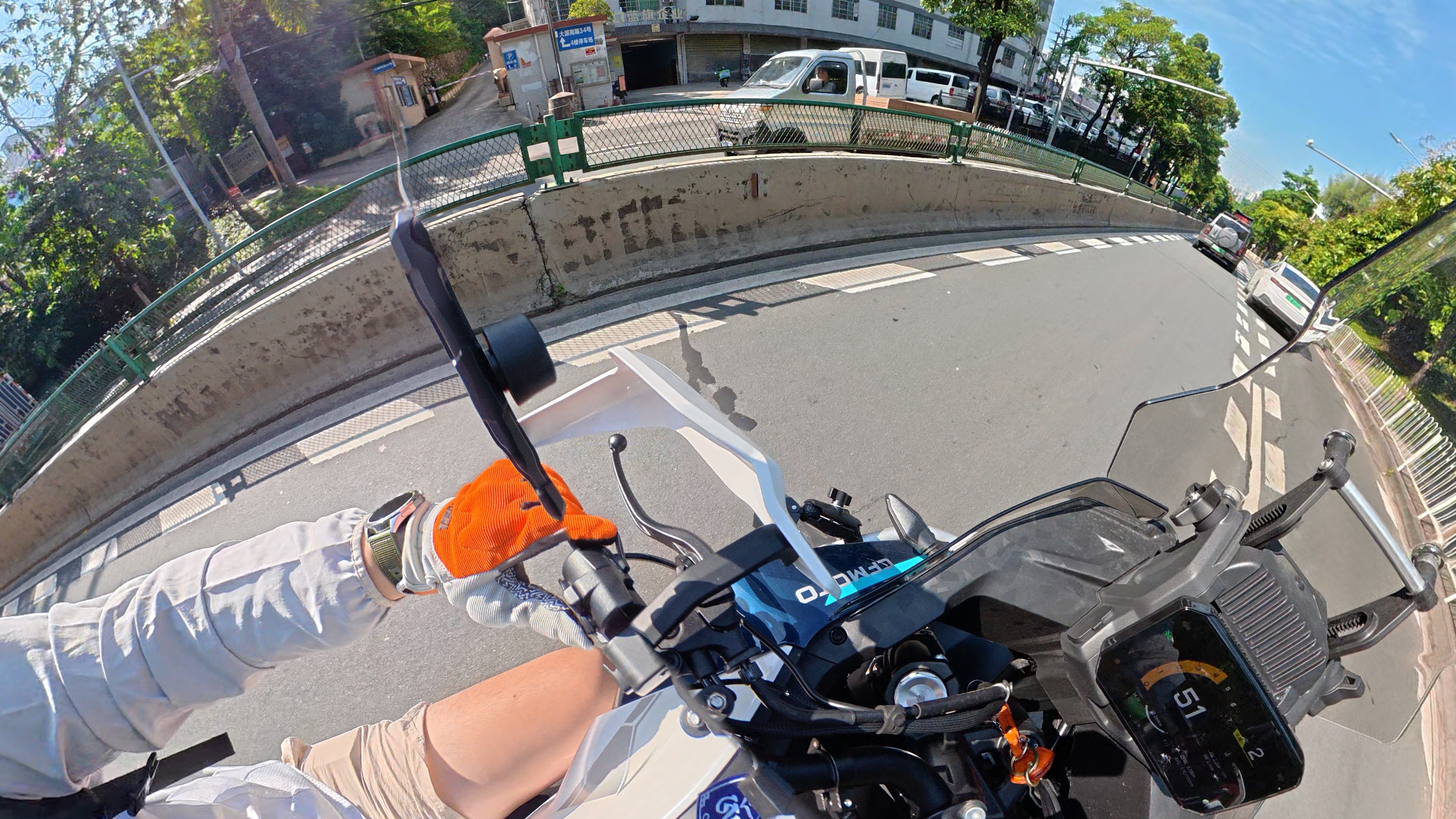
(Image source: Leitech)
In single-lens mode, the DJI Osmo 360 supports up to 5K 60fps recording and can enable the same SuperSteady (RS) and 12mm ultra-wide-angle view as the Action series. If you find the 12mm view insufficient, you can even enable the exclusive "Extreme Wide-Angle Mode," shortening the focal length directly to 6mm.
Judging solely by the image, single-lens mode's image quality and color are significantly better than 360° panoramic mode, almost comparable to DJI's Action series. It's ideal for shooting needs when users don't require panoramic recording, essentially offering "buy one, get one free" value.
Besides the two recording modes mentioned, the DJI Osmo 360 also supports selfie mode, time-lapse, stationary time-lapse, and simple shooting modes. Almost every user can find what they need here.
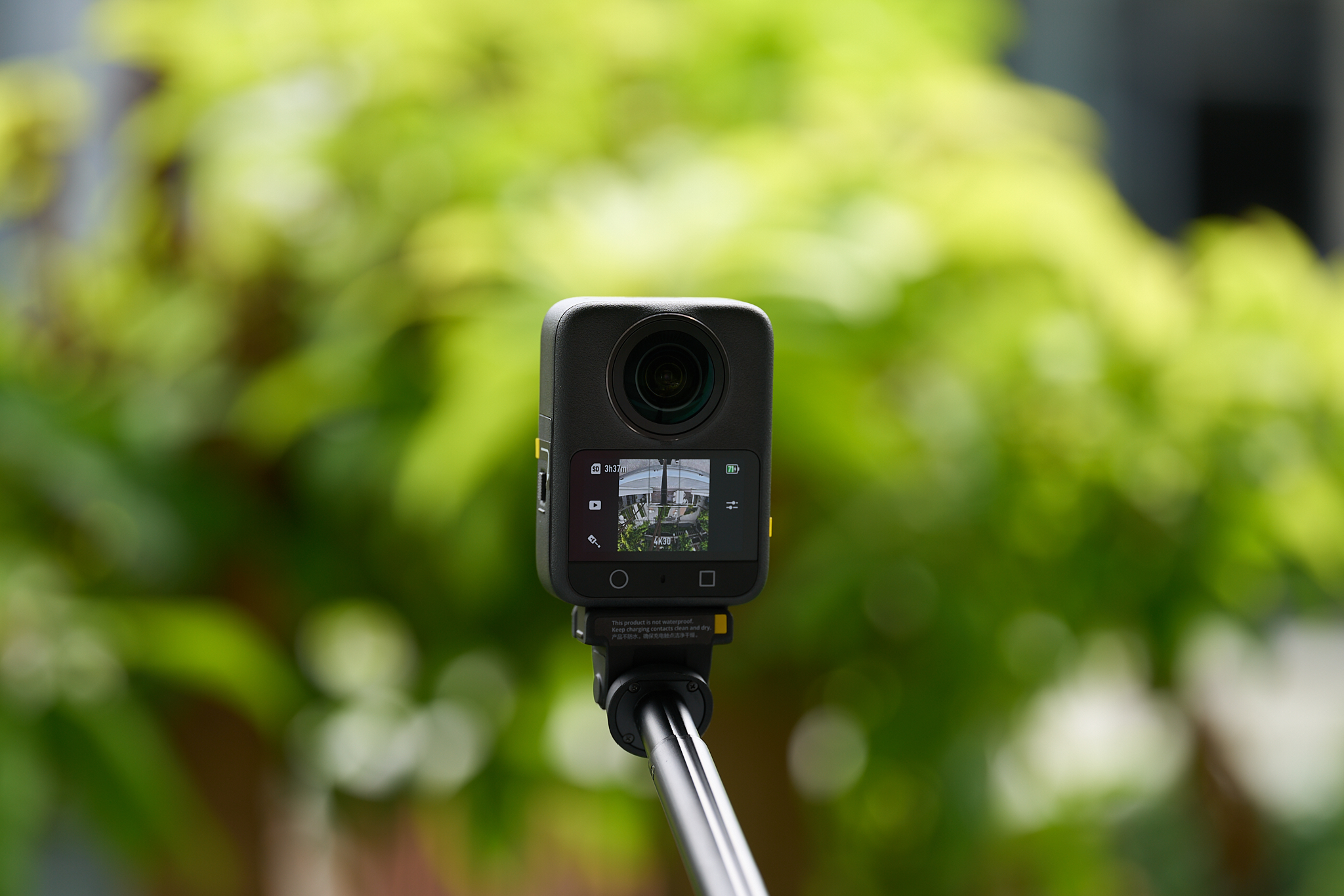
(Image source: Produced by Lei Technology)
Finally, I'd like to mention wind noise. As we know, DJI's Action series isn't great at resisting wind noise, especially when mounted on a helmet's chin. At high speeds, almost all recorded sound is wind noise. Thanks to its larger size, the DJI Osmo 360 has more sound-recording microphones, naturally making it much better at resisting wind noise than the Action series.
I conducted a test, and under speeds below 40 mph, the DJI Osmo 360 can basically record all ambient sounds intact. When speeds exceed 50 mph, wind noise becomes slightly more noticeable, and at speeds over 70 mph, wind noise fills almost the entire audio track.
Therefore, if you want to capture engine and exhaust pipe sounds as much as possible when recording cycling videos, I recommend pairing it with a professional wireless microphone. The improvement in sound recording quality is undeniable.
No Issues with Hardware, but What About the Software?
A panoramic camera's biggest advantage over an ordinary action camera is 360° recording with no dead angles, but this also complicates post-production editing. Many beginners are at a loss when facing panoramic videos for the first time.
However, DJI is renowned for its user-friendly products. Even in its panoramic camera debut, it provides many editing suggestions and simplifies the process extensively.
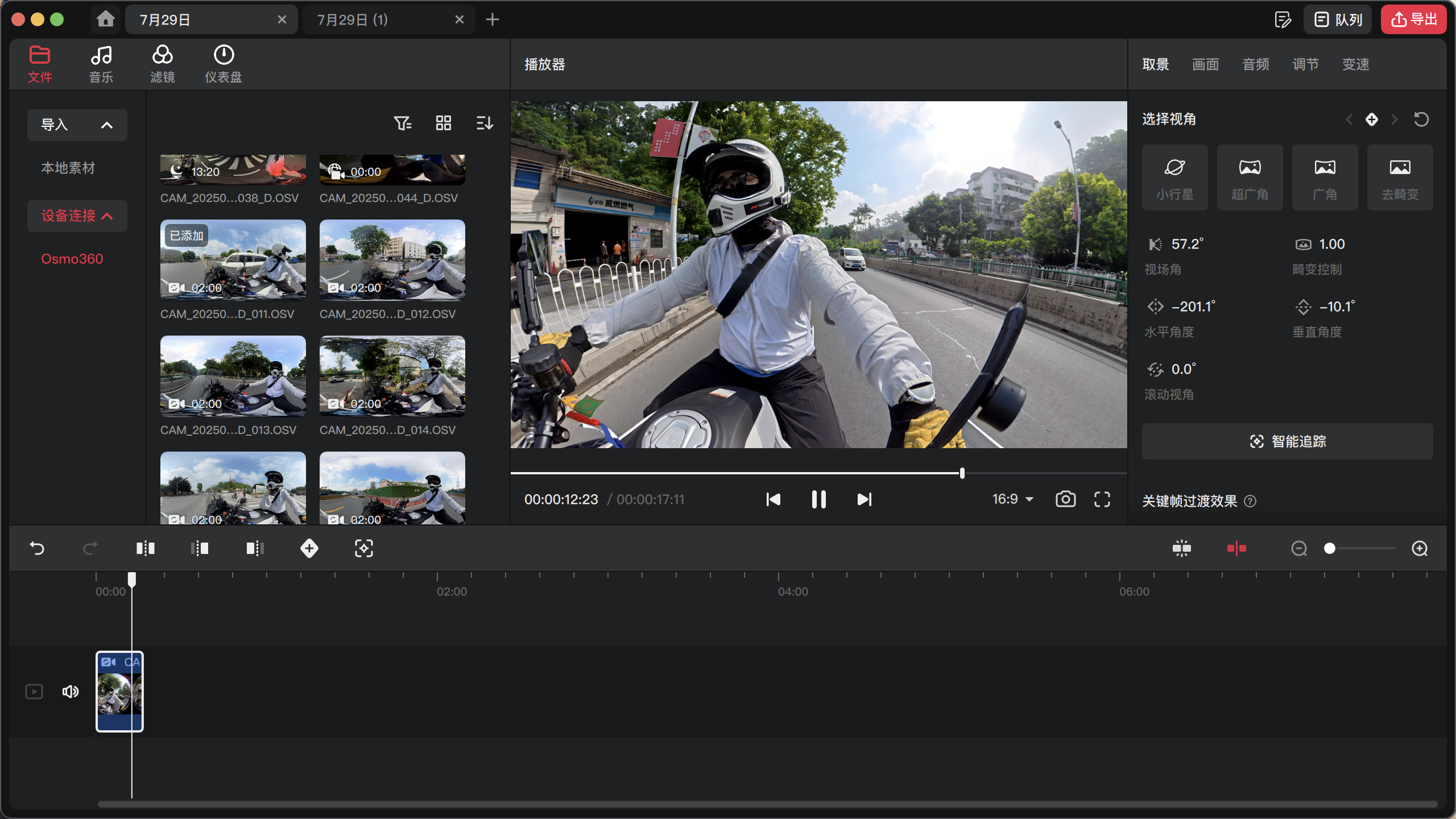
(Image source: Produced by Lei Technology)
Although most images in this article are edited using DJI's newly launched DJI Studio software, I believe most users still process videos through DJI Mimo. After all, using a mobile phone is much more convenient than opening a computer. Thus, how well the DJI Osmo 360 performs in mobile app editing has also become a concern of mine.
Upon connecting to the official DJI Mimo app, the operational interface presents a commendable simplicity. Merely glancing at the text beneath each icon reveals the function's intended purpose.
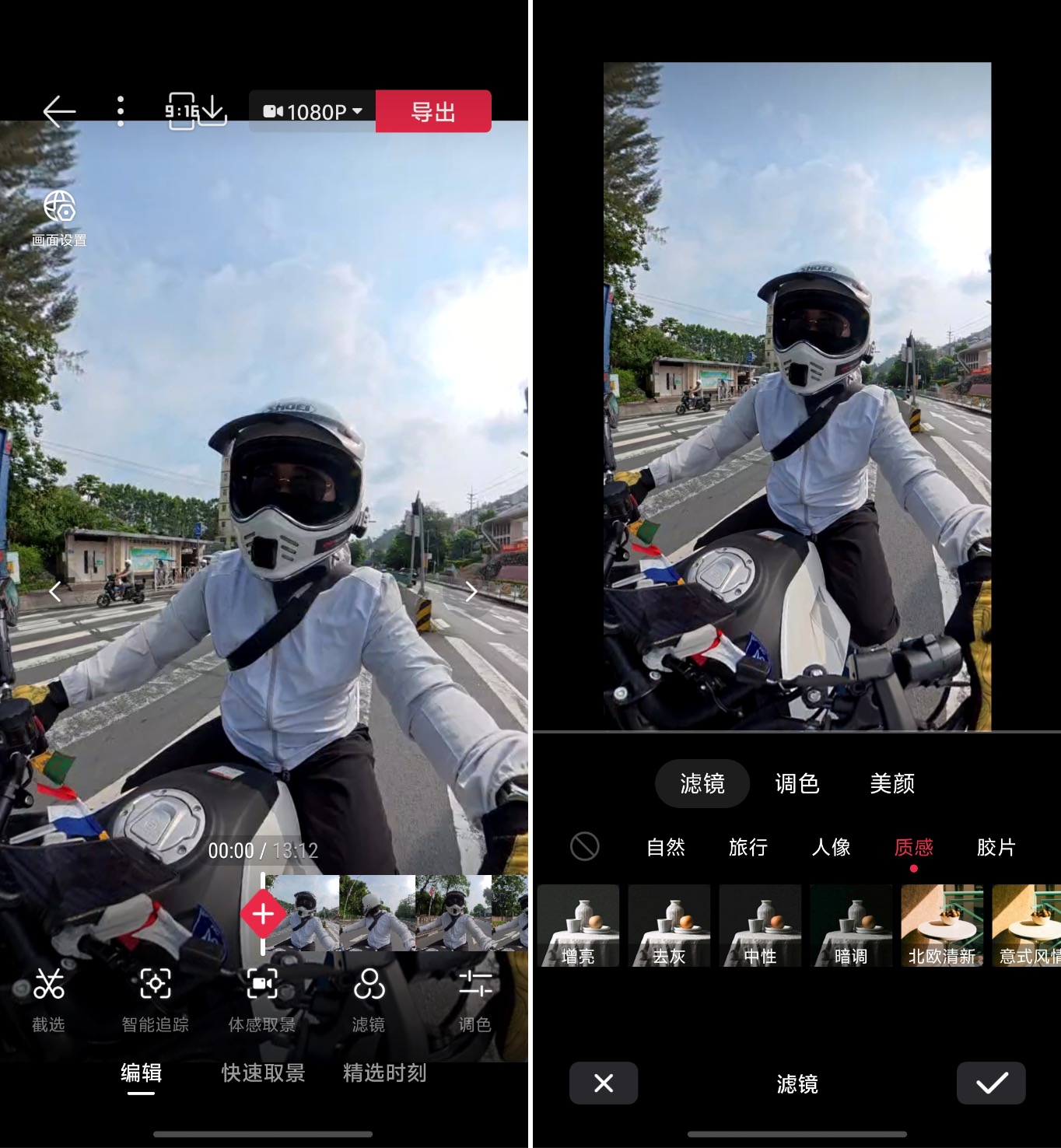
(Image credit: Lei Technology)
A standout feature that significantly lowers the barrier to editing is the intelligent tracking function. It identifies the primary subject within the frame and generates a unique perspective for each individual to track. Coupled with high-resolution recording, users can not only capture comprehensive multi-person footage but also obtain close-ups of different individuals.
With the panoramic shooting capabilities of this camera, there's no need to set up multiple camera positions or shoot repeatedly to obtain videos from varied angles.
For solo shooters, the simpler "Main Perspective" and "Fixed Perspective" options are available. Upon completion of filming, users can directly obtain a flattened video in their chosen mode, while retaining the full panoramic video for flexible export options.
Particularly noteworthy is the built-in Highlight Moments feature. Leveraging AI analysis based on sound and movement changes, it automatically frames noteworthy subjects and selects moments deemed worthy of recording.
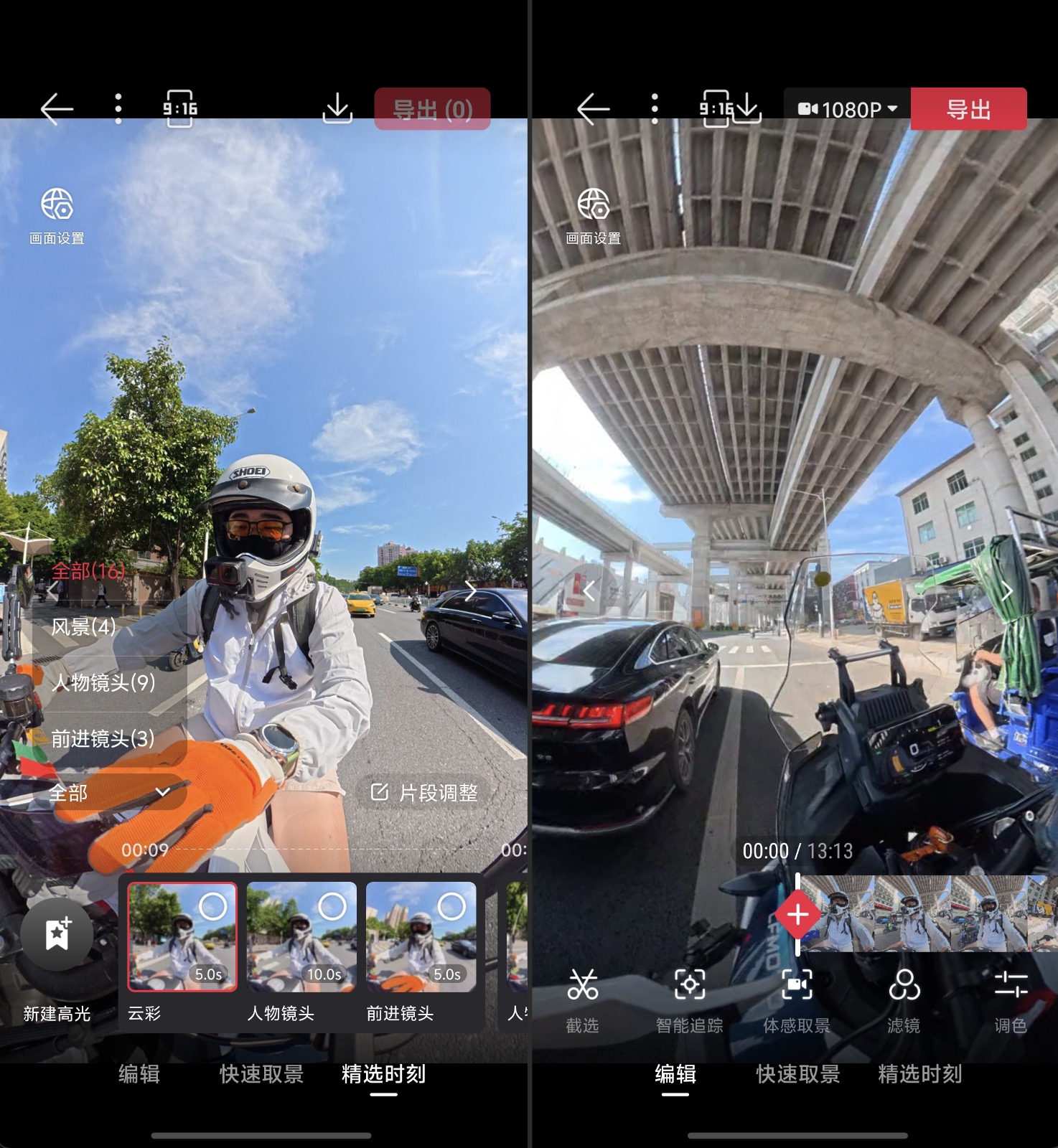
(Image credit: Lei Technology)
In a brief test, I input a 20-minute video and it took approximately 4 minutes to generate a 34-second highlight reel. A quick review revealed that most clips were indeed engaging. Should any adjustments be necessary, they can be made post-generation.
As for the more whimsical "Crystal Ball," "Asteroid," and "Fisheye" perspectives, I'll leave those for the curious to explore. Suffice it to say, they lean more towards entertainment than practicality.
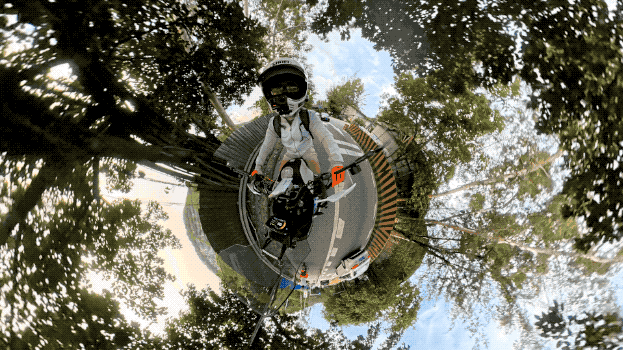
(Image credit: Lei Technology)
The DJI Osmo 360 also supports the same dashboard data as the Action series. By enabling the "Sports Training" function within DJI Mimo during recording, data such as time, distance, real-time speed, and altitude during cycling or running can be accurately captured. During video editing, simply importing this data yields a more professional cycling or running video.
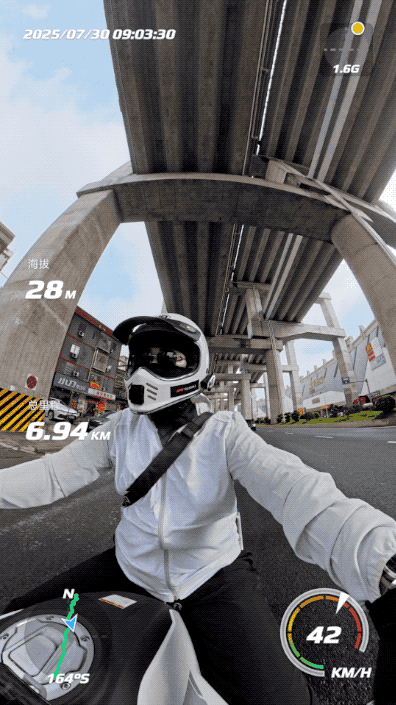
(Image credit: Lei Technology)
However, after several practical tests, I found that the GPS positioning data from smartphones isn't entirely accurate, with a delay of around one to two seconds between the actual data and the video.
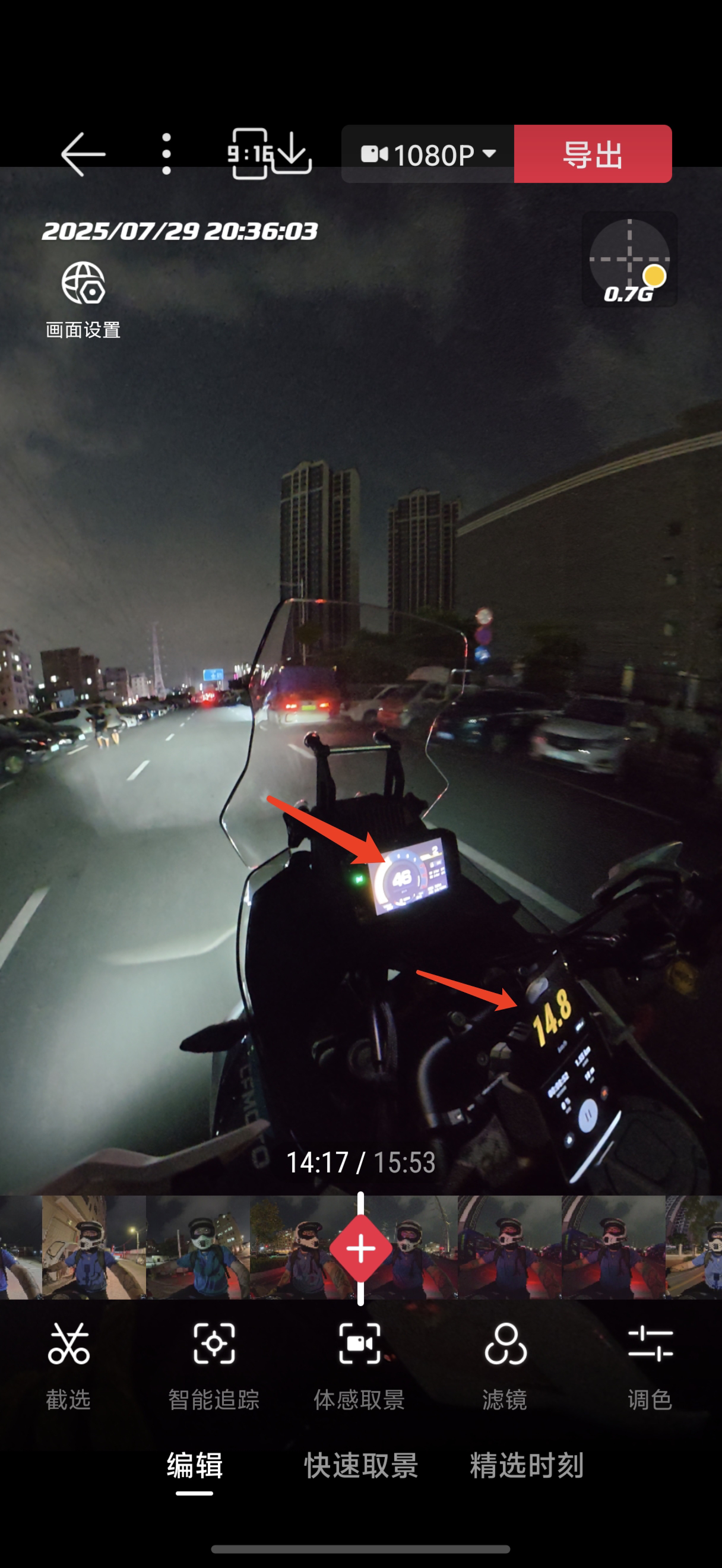
(Image credit: Lei Technology)
Switching to a watch that supports DJI's motion trajectory recording for sports data resolved this issue.
Lastly, a concern that weighs heavily on my mind: Will there be any lag during editing?
Prior experience with similar products left me skeptical about editing panoramic videos on mobile devices. Loading times of two to three minutes per video and a one- to two-second buffer delay when adjusting the timeline were common frustrations. However, DJI Mimo seems to have addressed these issues effectively.
A 20-minute video only takes about 5-6 seconds to fully load (albeit at a preview resolution with reduced image quality). Timeline adjustments are instant, and coupled with DJI's inherently user-friendly editing interface, my impression of the DJI Osmo 360 has soared.
Lei Technology Summary: A highly engaging panoramic camera with room for even more fun.
Following Lei Technology's review template, here's Xiao Lei's take on DJI's inaugural panoramic camera, the Osmo 360:
Pros:
1. Top-notch performance in image quality, color reproduction, stabilization, and night scenes, rivaling T1-level devices.
2. Impressive battery life, outlasting many action cameras.
3. Intuitive and user-friendly app, making editing accessible even to beginners.
4. Excellent single-lens image quality, capable of functioning as a regular action camera.
5. Comprehensive and robust DJI accessory ecosystem.
Cons:
1. Limited play modes; more options could enhance versatility.
2. The included adapter is incompatible with the Action series.
3. The algorithm for eliminating the selfie stick is somewhat aggressive.
Price-wise, the DJI Osmo 360's standard package is priced at 2999 yuan, including the camera body, a cold-resistant extended battery, lens protective sleeve, and camera protective bag.
The Osmo 360 Freeflow Kit, priced at 3799 yuan, includes the camera body, three cold-resistant extended batteries, a multi-function battery storage box, an adjustable quick-release adapter, a 1.2-meter invisible selfie stick, a lens protective sleeve, and a camera protective bag. Compared to competitors, this pricing offers exceptional value.
Overall, my assessment of the DJI Osmo 360 is above average. While it didn't revolutionize appearance or play modes, it excels in core panoramic recording capabilities, delivering top-tier image quality and advanced algorithms. It's hard to believe this is DJI's first panoramic action camera.
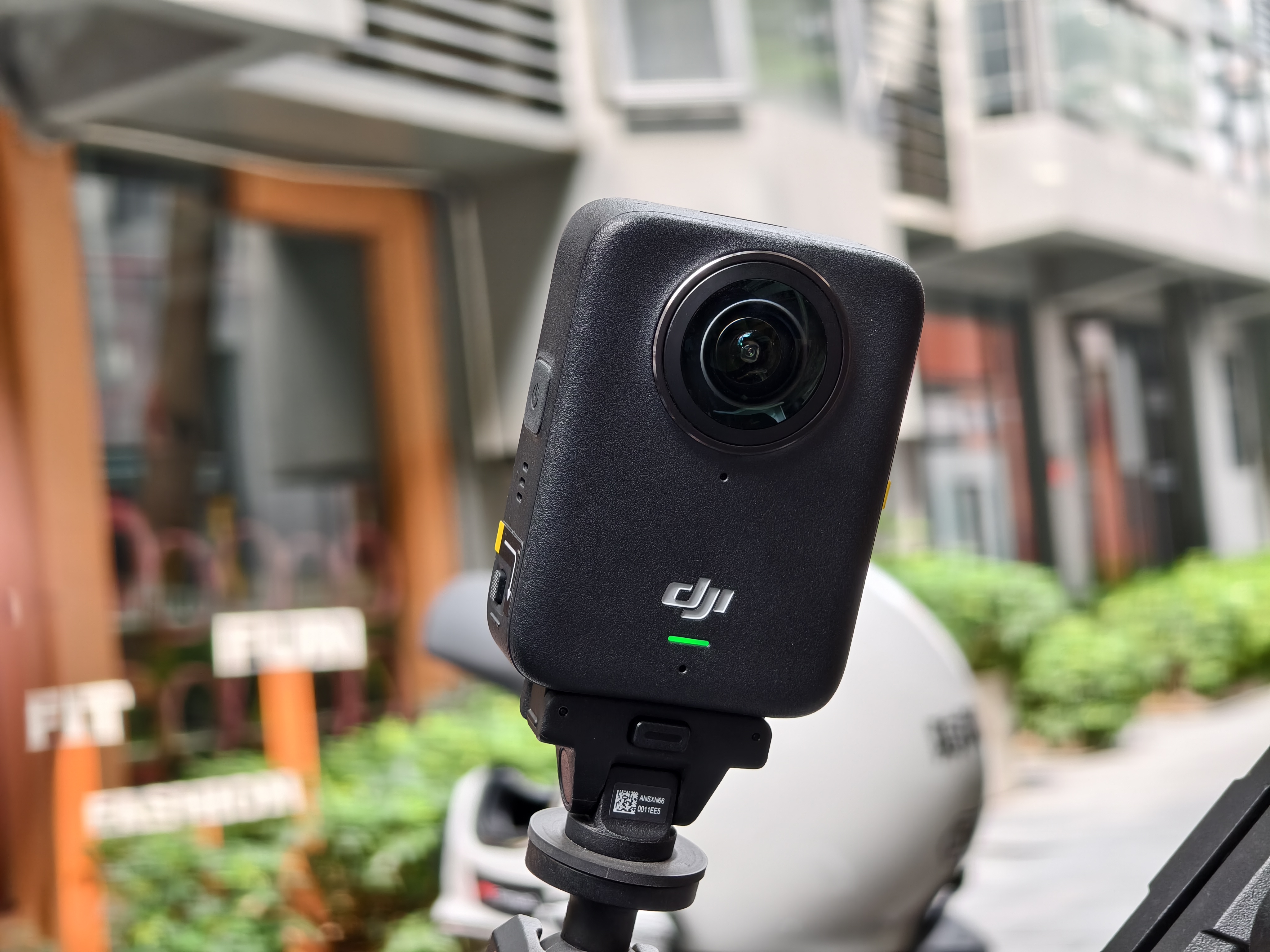
(Image credit: Lei Technology)
With its enhanced control logic, simplified operation, and light editing capabilities within the app, the Osmo 360 stands out as an ideal panoramic action camera for beginners. For those aiming to create blockbuster-style advertisements, the newly launched DJI Studio offers additional support.
If you're an outdoor sports enthusiast, vlogger, or motorcycle aficionado like me, a panoramic camera is an indispensable tool. Trust me; once you experience it, you won't forget this unique and captivating perspective.
Source: Lei Technology
Images in this article are sourced from: 123RF Authorized Image Library. Source: Lei Technology



